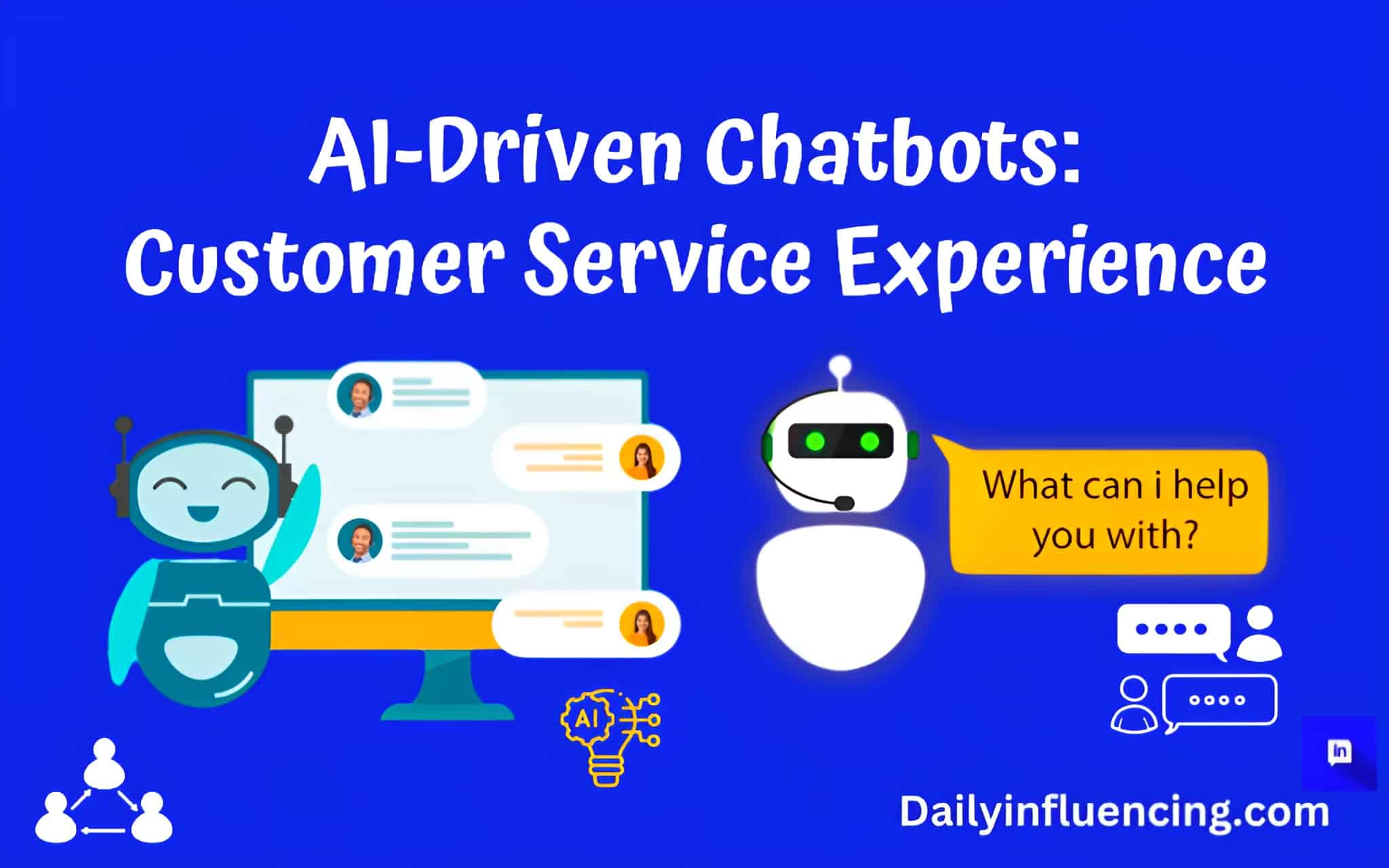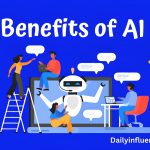
Discover how AI-driven chatbots transform customer support, enhancing experience & efficiency. Learn more about the Benefits.
Introduction to AI-Driven Chatbots
The rise of digital communication has transformed the way businesses interact with customers. Consequently, companies now require innovative solutions to manage the influx of customer inquiries. AI-driven chatbots have emerged as a vital tool in this regard.
AI-driven chatbots utilize artificial intelligence (AI) and natural language processing (NLP) to simulate human-like conversations. As a result, these chatbots can effectively engage with customers, providing personalized support and resolving queries efficiently. Furthermore, AI-driven chatbots can handle multiple conversations simultaneously, making them an attractive solution for businesses seeking to enhance customer experience.
Evolution of Chatbots in Customer Support
The integration of chatbots in customer support has undergone significant transformations over the years. Initially, chatbots were simple rule-based systems that provided limited support. However, with the advent of AI and NLP, chatbots have evolved to become sophisticated tools capable of understanding and responding to complex customer inquiries.
Moreover, the increasing availability of data and advancements in machine learning algorithms have enabled chatbots to learn from interactions and improve their performance over time.
Benefits of AI-Driven Chatbots
Businesses seeking to enhance customer experience and streamline support operations can significantly benefit from AI-driven chatbots. Consequently, these chatbots have become an essential tool for companies aiming to stay competitive in today’s digital landscape.
Enhanced Customer Experience through AI-Driven Chatbots
AI-driven chatbots enable businesses to provide customers with personalized support and instant resolutions to their queries. Furthermore, chatbots can handle multiple conversations simultaneously, ensuring that customers receive timely assistance. As a result, businesses can significantly improve customer satisfaction and loyalty.
Increased Efficiency and Productivity
By automating routine support tasks, AI-driven chatbots free up human support agents to focus on complex issues that require empathy and problem-solving skills. Moreover, chatbots can operate around the clock, providing customers with 24/7 support. Consequently, businesses can significantly reduce support costs and improve operational efficiency.
Cost Savings and ROI
Implementing AI-driven chatbots can lead to significant cost savings for businesses. Firstly, chatbots reduce the need for human support agents, resulting in lower labor costs. Additionally, chatbots can handle a high volume of customer inquiries, reducing the need for costly support infrastructure. As a result, businesses can achieve a significant return on investment (ROI) from AI-driven chatbots.
Key Features of AI-Driven Chatbot Solutions
AI-Driven chatbot solutions boast several key features that enable them to provide effective support to customers. Here are some of the most significant features:
Natural Language Understanding (NLU) in AI-Driven Chatbots:
NLU enables AI-driven chatbots to comprehend the nuances of human language, including idioms, colloquialisms, and context-dependent expressions.
Furthermore, NLU facilitates chatbots to understand the subtleties of language, such as:
‣ Figurative language and idiomatic expressions
‣ Context-dependent expressions and colloquialisms
‣ Emotional tone and sentiment analysis
As a result, chatbots can engage in more natural and human-like conversations, providing customers with a more personalized and supportive experience.
Contextual Awareness and Personalization:
AI-driven chatbots can access customer data and interaction history, enabling them to provide personalized support and recommendations. Additionally, chatbots can use contextual information, such as location and time, to provide relevant and timely assistance.
Moreover, contextual awareness enables chatbots to:
‣ Recognize and adapt to individual customer preferences
‣ Personalized recommendations and offers
‣ Use contextual information to resolve customer inquiries
As a result, customers experience a more personalized and supportive interaction, leading to increased satisfaction and loyalty.
Emotional Intelligence and Empathy:
AI-driven chatbots are designed to simulate human-like conversations, including emotional intelligence and empathy. Consequently, chatbots can recognize and respond to customer emotions, providing support that is both effective and compassionate.
Emotional intelligence also enables chatbots to:
‣ Acknowledge customer emotions
‣ Provide empathetic and supportive responses
‣ De-escalate conflicts and resolve customer complaints more efficiently
Implementing AI-Driven Chatbots in Customer Support
Implementing AI-driven chatbots in customer support requires careful planning and execution. To achieve success, businesses must take several key steps.
Defining Clear Objectives and Goals
Firstly, businesses must define clear objectives and goals for their AI-driven chatbot. What specific problems will the chatbot solve? What kind of support will it provide? By establishing clear objectives, businesses can ensure that their chatbot is designed to meet specific needs and goals.
Next, businesses must identify the key performance indicators (KPIs) that will measure the success. Will it be measured by customer satisfaction ratings, resolution rates, or response times? By establishing clear KPIs, businesses can evaluate the chatbot’s performance and make data-driven decisions.
Choosing the Right Chatbot Platform
Once the objectives and KPIs are established, businesses must choose the right chatbot platform. This platform must be scalable, secure, and easy to maintain. Additionally, it must integrate seamlessly with existing systems and tools.
Some popular chatbot platforms to consider are:
- Dialogflow: A Google-owned platform that offers natural language processing and machine learning capabilities.
- Microsoft Bot Framework: A set of tools for building conversational AI solutions, including chatbots.
- Amazon Lex: A service for building conversational interfaces, including chatbots and voice assistants.
- IBM Watson Assistant: A cloud-based AI platform that enables businesses to build conversational interfaces.
- ManyChat: A popular platform for building chatbots for messaging platforms like Facebook Messenger and WhatsApp.
- MobileMonkey: A platform that enables businesses to build chatbots for messaging platforms and websites.
- Tars: A platform that enables businesses to build conversational AI solutions, including chatbots.
When evaluating chatbot platforms, businesses must consider several factors, including:
- Scalability and security
- Integration with existing systems and tools
- Natural language processing and machine learning capabilities
- Ease of use and maintenance
- Cost and pricing models
Training, Testing, and Refining Chatbots
After selecting the right platform, businesses must train, test, and refine their AI-driven chatbot. This process requires ongoing effort and attention. Firstly, businesses must train the chatbot using relevant data and scenarios. This data must be accurate, up-to-date, and comprehensive.
Next, businesses must test the chatbot thoroughly. This testing must cover various scenarios, including happy paths, edge cases, and error handling. By testing the chatbot, businesses can identify and fix bugs, improving its overall performance.
Finally, businesses must refine the chatbot continuously. This refinement must be based on customer feedback, performance metrics, and emerging trends. By refining the chatbot, businesses can ensure that it remains effective, efficient, and aligned with customer needs.
Future of AI-Driven Chatbots in Customer Support
As AI technology continues to evolve, AI-driven chatbots will play an increasingly important role in customer support. Here are some emerging trends and predictions:
Emerging Trends and Technologies
Several emerging trends and technologies will shape the future of AI-driven chatbots in customer support:
- Conversational AI: will become more prevalent, enabling chatbots to engage in more natural and human-like conversations.
- Emotional Intelligence: Chatbots will be designed to recognize and respond to emotions, providing more empathetic and personalized support.
Multimodal Interactions and Omnichannel Support
- Voice Assistants: Voice assistants like Alexa and Google Assistant will become more integrated with chatbots, enabling customers to interact with businesses through voice commands.
- Visual Interfaces: Visual interfaces like augmented reality (AR) and virtual reality (VR) will become more prevalent, enabling customers to interact with businesses through immersive experiences.
CONCLUSION
In conclusion, AI-driven chatbots have revolutionized the customer support landscape. By providing 24/7 support, personalized recommendations, and proactive issue resolution, chatbots have enabled businesses to deliver exceptional customer experiences.
Recap: Key Takeaways
Here are the key takeaways from this guide:
- AI-driven chatbots can provide 24/7 support, reducing response times and increasing customer satisfaction.
- Chatbots can personalize recommendations and offers, increasing customer engagement and loyalty.
- Proactive issue resolution can reduce the need for reactive support, improving overall customer experience.
- It can analyze customer data, providing valuable insights for businesses.




